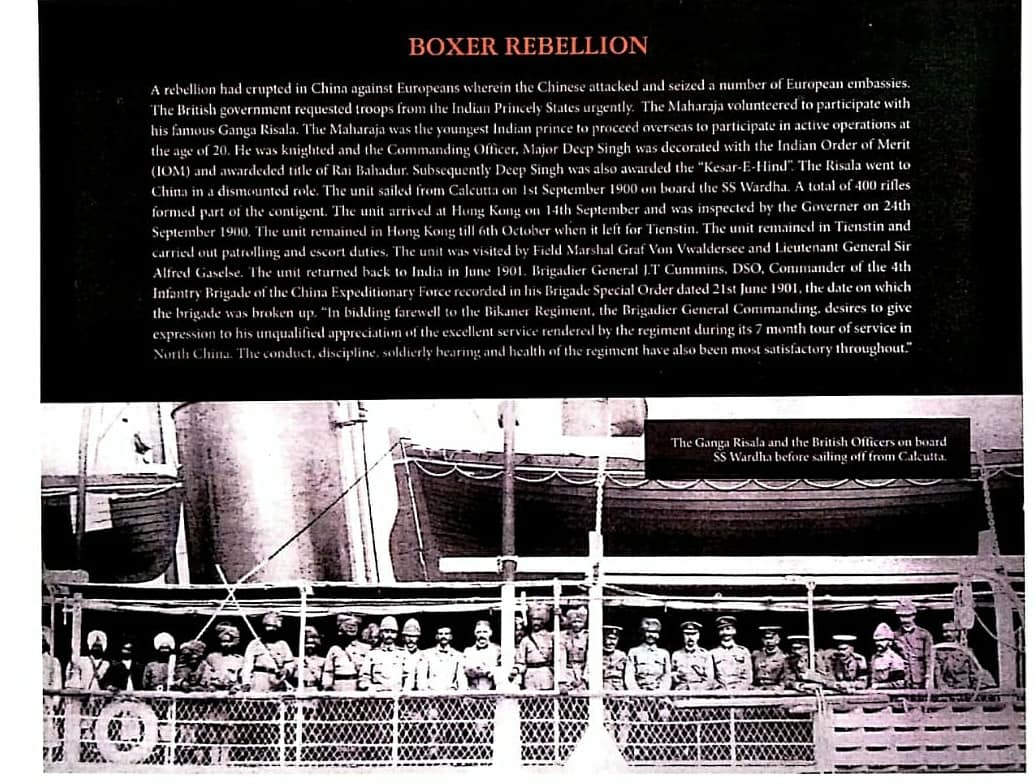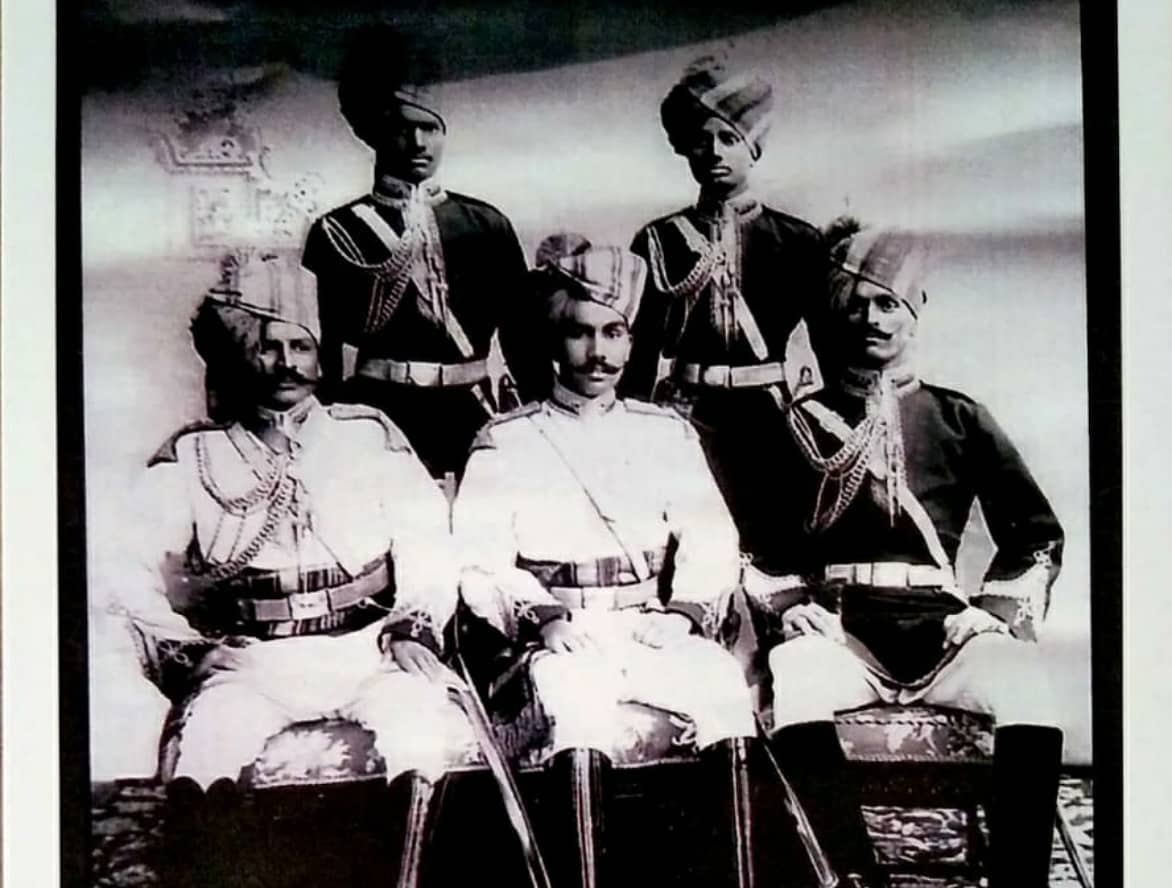When the path to China was not through a disputed valley, but through the sea…
The valleys, or waterways, between India and China have been fraught with the threat of war for long.
@UdayMahurkar @VishnuNDTV
@arjunrammeghwal @VasundharaBJP
The valleys, or waterways, between India and China have been fraught with the threat of war for long.
@UdayMahurkar @VishnuNDTV
@arjunrammeghwal @VasundharaBJP
As far back as the turn of the last century, when the Boxer Rebellion broke out in China, the British turned to Indian princely states to lend a hand to their efforts in quelling the rebellion.A young Maharaja Ganga Singh, ever the visionary and statesman as much as he was a
military strategist, volunteered eagerly. At a time when a sea voyage through “the dark waters” was anathema, the brave soldiers and officers of the Risala sailed to China and conducted themselves in an exemplary manner. A few of them lost their lives in battle, and are
A few of them lost their lives in battle, and are commemorated at the war memorial in Bikaner.
Led by H.H. Maharaja himself, the officers included Lieutenant Colonel Thakur Deep Singh, Commanding Officer, Ganga Risala; Colonel Thakur Gopal Singh of Malasar;
Led by H.H. Maharaja himself, the officers included Lieutenant Colonel Thakur Deep Singh, Commanding Officer, Ganga Risala; Colonel Thakur Gopal Singh of Malasar;
Major Thakur Bakhtawar Singh Syani of Smandsar; and my great grandfather Colonel Thakar Prithiviraj Singh of Daudsar.
Photo and research credit: Thakur Mahavir Singhji of Daudsar
*******
Photo and research credit: Thakur Mahavir Singhji of Daudsar
*******
The text accompanying the picture reads…
A rebellion had erupted in China against Europeans wherein the Chinese attached and seized a number of European embassies. The British government requested troops from the Indian princely states urgently.
A rebellion had erupted in China against Europeans wherein the Chinese attached and seized a number of European embassies. The British government requested troops from the Indian princely states urgently.
The Maharaja volunteered to participate with his famous Ganga Risala. The Maharaja was the youngest Indian prince to proceed overseas to participate in active operations at the age of 20. He was Knighted and the Commanding Officer,
Major Deep Singh was decorated with the Indian Order of Merit (ION) and awarded title of Rai Bahadur. Subsequently Deep Singh was also awarded ‘Kesar-e-Hind’. The Risala went to China in a dismounted role. The unit sailed from Calcutta on 1st September 1900 on board the SS Wardha
A total of 400 rifles formed part of the contingent. The unit arrived at Hong Kong on 14th September and was inspected by the Governor on 24th September 1900. The unit remained in Hong Kong till 6th October when it left of Tienstin. The unit remained in Tienstin and carried out
out patrolling and escort duties. The unit was visited by Field Marshal Graf Von Vwaldersee and Lieutenant General Sir Alfred Gaselse. The unit returned back to India in June 1901. Brigadier General J.T. Cummins, DSO, Commander of the 4th Infantry Brigade of the China
China Expeditionary Force recorded in his brigade special order dated 21st June 1901, the date on which the brigade was broken up. “In bidding farewell to the Bikaner regiment, the Brigadier General Commanding, desires to give an expression of his unqualified appreciation of the
excellent service rendered by the regiment during its seven-month tour of service in North China. The conduct, discipline, soldierly bearing, and health of the regiment have also been most satisfactory throughout.”

 Read on Twitter
Read on Twitter



